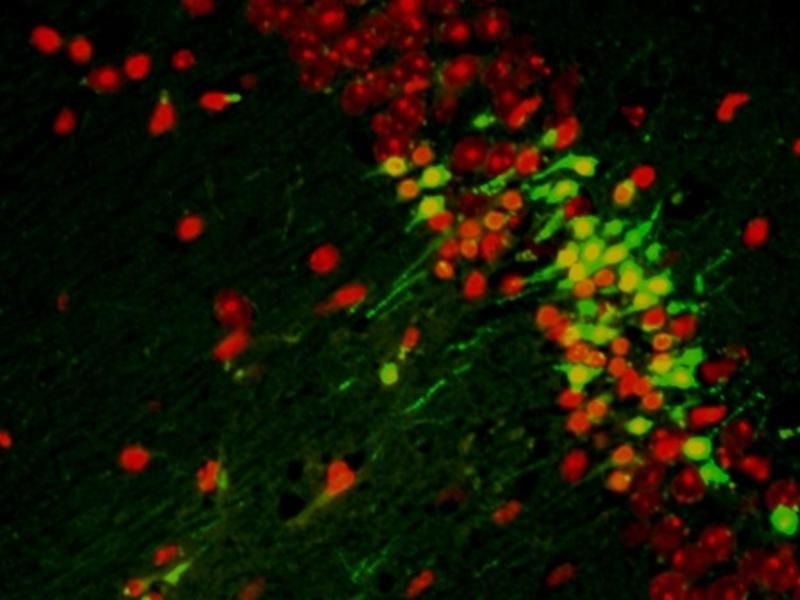A common evolutionary pattern in the development of different types of neurons
A team of researchers from CSIC relates the development of neuronal diversity with genetic transcription factors that are repeated in several species
Advertisement
A CSIC research group publishes in Genome Research a new advance in the understanding of the formation of our brain. The scientific team has found a common pattern in the families of transcription factors that read the genetic code and direct the formation of different types of neurons. Moreover, according to the study, this pattern is repeated in different species, reflecting an evolutionary conservation in their function. The results may contribute to the study of pathologies associated with neuronal formation.

Microscopic image of neurons.
CSIC
The team, led by Nuria Flames, a scientist at the Instituto de Biomedicina de Valencia (IBV-CSIC), used an animal model with a more rudimentary nervous system than the human, the small nematode Caenorhabditis elegans (C. elegans), to better understand the molecular mechanisms that generate the different types of neurons. The nervous system of C. elegans is composed of 302 neurons that are classified into 118 types, more approachable than the more than 80 billion neurons in the human brain.
All cells of the organism including neurons, both human and C. elegans, share the same genome. Each cell type identifies from the entire repertoire of more than 20,000 coding genes those it needs to activate, which will give rise to the proteins that enable it to acquire its specific functions. Largely responsible for this selection are the so-called 'transcription factors', which interpret the 'score' written in the genetic code for the cells to execute flawlessly.
"The basic gene kits that give neurons functionality are highly conserved in the evolution of species, and are therefore the same in C. elegans and humans. We wanted to understand the mechanisms that lead to the development of different types of neurons, and whether there is a common pattern used by all neurons regardless of their type," says Nuria Flames.
To do this, the research team simultaneously studied eleven different types of neurons in C. elegans, as well as all the transcription factors that exist in the genome of this nematode (less than 900 compared to the 1,500 transcription factors in the human genome). By eliminating one by one the function of these factors and observing their effect on the generation of the neuron types studied, they identified an average of ten transcription factors for the formation of each type.
Families and collectives of transcription factors.
"These factors were different for each neuron type; in our study we found none that were required for all," Flames recalls, "although we may not have been able to find them because of technical limitations. However, transcription factors can be grouped by type according to the family to which they belong, and we found a pattern in the families of transcription factors that is repeated in the generation of the different types of neurons," says the CSIC researcher. Most of the factors involved belong to the families known as bHLH, HD, ZF, bZIP and NHRs. This pattern is repeated in every neuron of C. elegans, but also seems to be present in other species such as mice and fruit flies.
In the second part of the work, the team led by Flames sought to understand how transcription factors are able to distinguish which genes to activate from all those in the genome. They selected one type of neuron, the dopaminergic neurons (which produce dopamine, a neurotransmitter), identifying five transcription factors that act together as a collective to activate the genes that give them their specific qualities. This happens in other species as well.
"We have seen that the transcription factors that regulate dopaminergic neurons in C. elegans have counterparts that do the same in a region of the mouse brain," reveals Nuria Flames. "Therefore, our studies help to better understand how neuronal diversity is generated in our brain and, in the longer term, to understand some pathologies in which these diversity generation programs fail, as well as to help in the design of strategies to generate types of neurons in vitro that are of biomedical interest," concludes the researcher.
Note: This article has been translated using a computer system without human intervention. LUMITOS offers these automatic translations to present a wider range of current news. Since this article has been translated with automatic translation, it is possible that it contains errors in vocabulary, syntax or grammar. The original article in Spanish can be found here.
























































